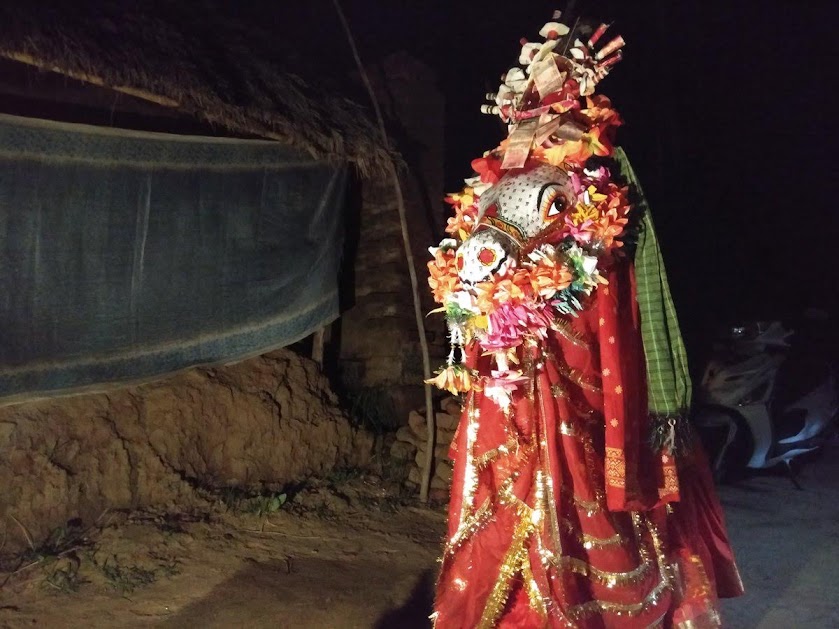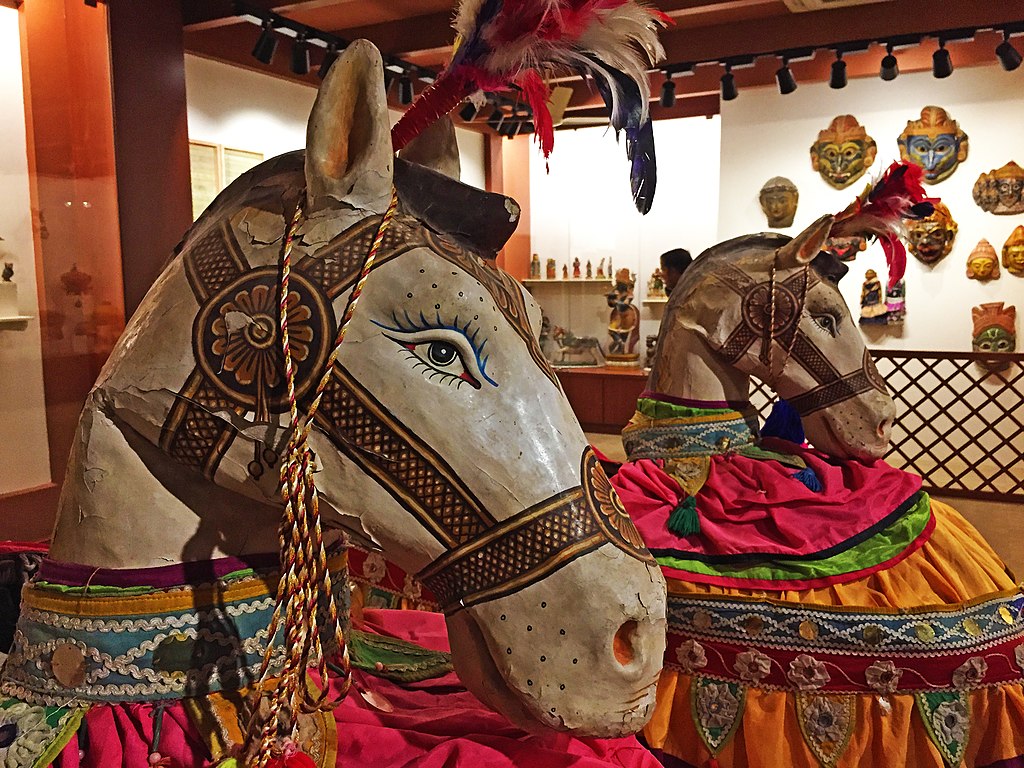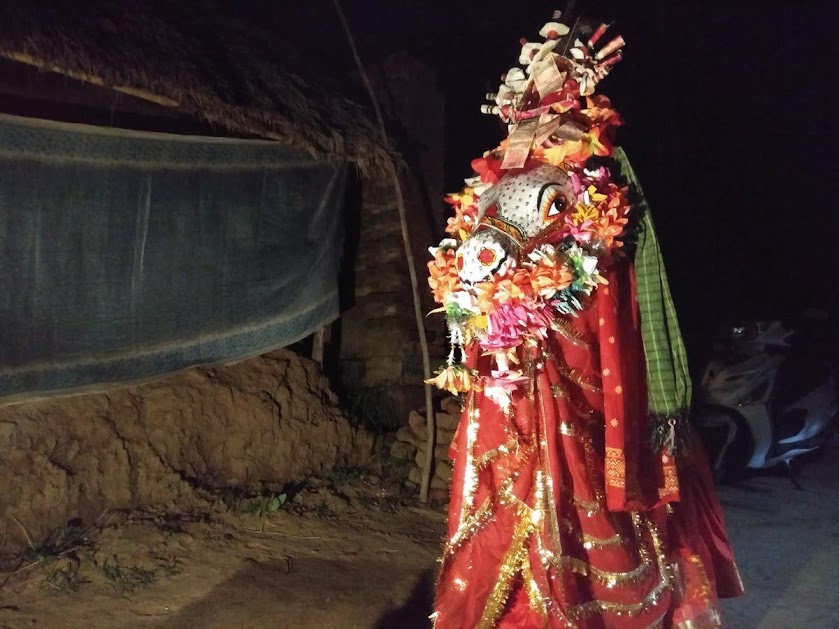The culture of Odisha has a heterogenous combination of both classical and folk form. Odisha occupies a unique place among the states of India due the assimilation of various types of racial and cultural elements. Known as “Utkal” Chaiti Ghoda Nacha (the land of excellence in art) that have been maintained from ancient past, Odisha has always held her head high because of brilliant folk traditions.
Most of the communities of Odisha have their own cultural way of life which includes folk dance, art & crafts, theatre, songs, rituals, legends and ballades etc irrespective of their level of economic status, literacy rate, motion of progress. Odisha folk culture still prevails in the rural life and agrarian society. Folk dances not only imbibe new influences but also maintain tradition and continuity and Chaiti Ghoda Nacha (Dummy Horse dance in the month of Chaitra) is one of its living examples.
Historical Significance
Chaiti Ghoda Nacha is a popular folk dance of Odisha which is connected to goddess Baseli or Vasuli. Worship of Baseli and the Dummy horse dance is one of the most important festivals of the fishermen who observe it with great devotion and austerity.
The details have been mentioned in “Kaibarta Geeta” by mystic Odia poet Achutananda Das. There is an exclusive festival for the bonafied fishermen community of coastal Odisha who are popularly known as “Keuta” (Kaibarta) in the month Odia month of Chaitra (March). It is held for an entire full month beginning from Chaitra Purnima (full moon day of Chaitra in March) and ends with Baisakha Purnima (full moon day in April).
The festival and folk dance are wholely connected with the Shakti cult by the fisherman community among the coastal Odisha. The festival also goes by the name Baseli or Vasuli puja. Goddess Vasuli, the horse headed goddess is considered to be the tutelary deity and the protector of the fishermen community.

Folklore says that the worship of Shakti had gained tremendous prominence and the worship of Goddess Baseli (Baseli puja) started during the tenth century when tantricism of both Hindu and Buddhist merged into one religious’ practice.
During a calamity, Lord Vishnu was unable to find a place to rest and reduced his form to rest on a floating banyan leaf. As the leaf dwindled on the stormy waves, Lord Vishnu created a man out of the dirt of his ear zone to help row. But soon Lord Vishnu soon fell into deep sleep and a huge demonic fish ‘Raghab’ swallowed the man. The leaf again started dwindling and Lord Vishnu’s sleep was disturbed. Lord Vishnu was surprised to find the man missing. By his intuition Lord Vishnu got hold of everything and killed the ‘Raghab’, rescuing the man out.
Meanwhile, Lord Vishnu transformed the banyan leaf into a mighty horse. He also summoned Biswakarma to build a boat at once. Lord Vishnu blessed the man and his community to be known as Kaibarta. He also asked him to be the king among them, make the horse as carrier and use the boat for trading.
You can read our another post on Progress of Bee Keeping in Odisha
The celebration of the festival begins on the auspicious day of Chaitra Purnima and the Kaibarta (fishermen) worship a bamboo with vermillion, candle paste, butter lamp etc. The bamboo is then ceremonially split into numerous pieces out of which twelve pieces are picked for preparation of the frame of the dummy horse. The frame is dyed with red clay covered with a Pata (indigenous silk cloth of Odisha). After which a painted colorful horse head is made out of wood and is fixed to the frame and a garland of Mandara (Hibiscus) flowers is placed on the neck during early worship.

The dummy horse is worshipped till eighth day of the dark fortnight and after which it is taken out for ceremony. A man dances to the rhythm of Dhola and Mahuri during the dance of dummy horse moves along with the steps of dancer. The Chaiti Ghoda dancer team consists of two dancers, one male, one female (mostly a male in female attire), and a drummer along with a piper. Particular folk songs are sung which bear the beauty of the whole performance and is easy to learn and understand for which very popular among local people.
The Chaiti Ghoda Nacha (dummy horse dance) particularly in villages of coastal Odisha is very popular and attracts large audience to witness the performance. During the performance of Chaiti Ghoda Nacha two other characters called as “Chadua-Chaduani” or “Rauta-Rautani” also perform dance with folk songs based on different mythological episodes.
The Rautani (female character is played by a male) is Rauta’s (male character) co-dancer and co-singer. The dummy horse is ceremonially placed at the centre and the performance is held in front of it. There are both professional and amateur dummy horse dance groups in the coastal districts of undivided Cuttack and Puri who perform this folk dance. The dummy horse head is taken out ceremonially from the frame and is preserved in a local temple till next year after the end of the Chaiti Ghoda and Vasuli Puja festival
Significance during Freedom Movement
The fisherman community of Kujanga area used this dance during the freedom movement against the British rule. Through this dance many freedom fighters easily mobilized the fishermen community of Odisha.
Present Scenario
Currently, the Chaiti Ghoda Nacha is not only limited among the fishermen community as people of other communities have taken interest in this colourful folk dance.

